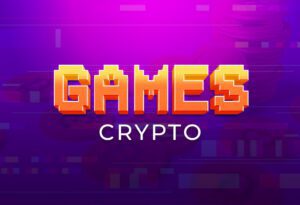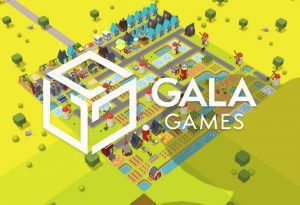
Table of Contents
ToggleIf you are interested in the world of cryptocurrencies you may have heard about Lightnite, a game like Fortnite but with Bitcoins and Lightning Network. This is a battle royale game just like Fornite. Lightnite includes instant micropayments with bitcoins through Lightning Network.
If you are interested in how it works or just to learn, in this publication we will tell you all about this game and how it works.
History of Lightnite
This game was created by Satoshi’s Games. Its release took place at the celebration of the first major conference on Lightning Network, the Lightning Network Conference (LNConf). This conference took place on October 19 and 20, 2019.
The prominent Satoshi Games team introduced Lightnite as the first battle royale style game to feature Bitcoin (BTC) micropayment integration through a network of channels and second layer nodes. All with the goal of monetizing the battle royale for those players who wish to do so.
Carlos Roldán, co-creator of Satoshi’s Games was the one who presented the game during his participation in the LNConf. It is worth mentioning that not only the game was presented, but also a new game distribution platform called Elixir, although all the attention was focused on the launch of the new game.
Although the game started its development in 2019, its current release date is November 1, 2021 at 00:00 UTC. It should be noted that, in order to be able to accelerate the development process, Satoshi’s Game team has created a crowdfunding campaign where various contribution packages are included.
The same users will be able to purchase early access to Lightnite, as well as other items including stickers, posters, t-shirts, and a special contributor package. This package includes, in addition to merchandising and access to the game, the power to decide on some aesthetic elements of the videogame’s development. In order to have access to this package, each user who wishes to participate in this way must pay 1,000 dollars or more.

How does Lightnite work?
Roldan, the presenter of the game, through some statements revealed some basic details of its operation. One of the main features is that Lightnite will also use the concept of scarcity, as in the Bitcoin currency. The game will have an issuance limit of 21 million.
The game has a store, as expected. In the Lightnite store the skins are limited. We will be able to find hats, glasses, backpacks, and so on. However, all these items are limited per season. However, when a player uses his purchased skins and plays with them. At the end of the game he will keep them and will always be able to use them. Now, this is in the case that a player has purchased his skins as mentioned above. When the game has Bitcoins involved, the dynamic changes significantly.
The game becomes more competitive and “attractive” so to speak. Players no longer keep their skins, since losing the game leaves them on the game floor.
As expected, when a user loots another user and survives the entire game, he keeps the loot of the user who lost. The value of the loot is directly affected by the amount of these items. It can happen that no one picks them up and survives. In this case a unit would disappear. In this facet of the game we can see reflected the concept of “scarcity“.
With this method and ways of operating, the system helps to increase the value of the first items in the game, thus making in-game items symbolize a micro-payment opportunity and a more competitive environment for the so-called precoiners.
On the player side, Lightnite represents a multiplayer online battle royale game. In this game, each specific digital interaction between players, no matter how minor, ends up triggering a monetary reward or penalty. To better understand, users earn bitcoin when they shoot other players and conversely, lose bitcoin when they get shot. In addition to the main form of payment, the developers of the video game added other monetary incentives with the aim of making the game more attractive. As a result, some of the game’s elements cost real bitcoins. These items can be taken just like in other Battle Royale games.
Game users can customize their avatars through the purchase of in-game items by paying with satoshis, through micro transactions from the player’s wallet. It should be noted that the amount of bitcoin accumulated is updated in real time. This means that if the player makes a successful shot, receives a shot, or collects objects, his bitcoins will be updated immediately.

Balance management in the game
Regarding balance management in the game, any player can leave the game at any time and instantly withdraw his balance in his own wallet.
On the other hand, this is a game where any type of user can participate, whether or not they have Bitcoins. In case a player does not want to use Bitcoins or does not have them, he/she can play Lightnite in a non-Bitcoin way, that is to say, those users who do not use Bitcoins can participate in the game in the mode without Bitcoin functions.
This mode was created with the aim that users who do not want to use BTC will eventually be attracted by the enhanced interactivity through Bitcoin integration and start playing using this innovative technology.
This whole mechanism is, in turn, a way to increase the mass adoption of Bitcoin.
Gaming economics
The game developers reported that in-game items vary in rarity from Legendary when there is only 1 unit in stock, Rare when there are 100 units, Premium when there are 500 units and Normal when the supply is unlimited. These items include character masks, wearables, hoverboards and weapons.
Players who want to can pay for their items, just like their in-game Bitcoins. This operation is similar to Fortnite, however, as mentioned above there is a mode where players can play without risking any currency.
When users participate in a game with legendary aspect or Bitcoins, they can lose it, and if no one picks up the lost loot, the game will remove the items forever, just like when there is a loss of tokens and they are burned.
When loot is added to Liquid Network, the developers plan to enable a secondary economy outside the game where users will be able to carry out all normal operations such as buying, selling and exchanging their items with Bitcoin. This will require them to be able to verify the authenticity of their conquered items and at the same time be interoperable with other Bitcoin games in development.








